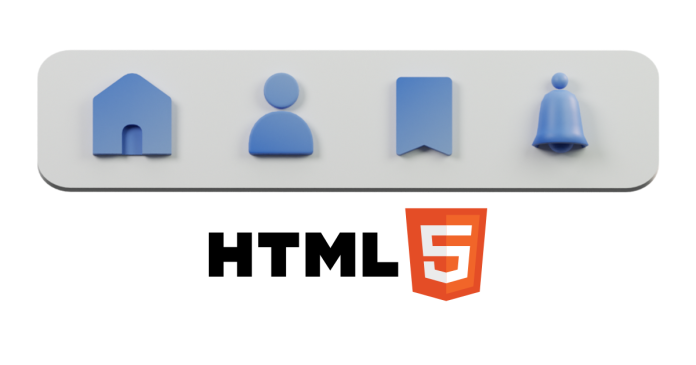How to Make a Navigation Bar in HTML
Creating a navigation bar in HTML is straightforward and can be customized with CSS for styling. Below is a step-by-step guide with examples.
1. Basic Navigation Bar Using HTML
You can create a simple navigation bar using the <nav> tag and unordered lists (<ul>). Here’s the code:
<!DOCTYPE html>
<html lang="en">
<head>
<meta charset="UTF-8">
<meta name="viewport" content="width=device-width, initial-scale=1.0">
<title>Navigation Bar Example</title>
</head>
<body>
<nav>
<ul>
<li><a href="#home">Home</a></li>
<li><a href="#about">About</a></li>
<li><a href="#services">Services</a></li>
<li><a href="#contact">Contact</a></li>
</ul>
</nav>
</body>
</html>
- Explanation:
<nav>: Semantic tag for navigation.<ul>: Unordered list to structure navigation items.<li>: List items for each link.<a>: Anchor tags to create links.
2. Styled Navigation Bar Using CSS
You can add CSS to style your navigation bar. Here’s an example:
<!DOCTYPE html>
<html lang="en">
<head>
<meta charset="UTF-8">
<meta name="viewport" content="width=device-width, initial-scale=1.0">
<title>Styled Navigation Bar</title>
<style>
/* Basic styling for navigation bar */
nav {
background-color: #333;
overflow: hidden;
}
nav ul {
list-style-type: none;
margin: 0;
padding: 0;
display: flex;
}
nav ul li {
margin: 0;
}
nav ul li a {
display: block;
color: white;
text-align: center;
padding: 14px 20px;
text-decoration: none;
}
nav ul li a:hover {
background-color: #575757;
}
</style>
</head>
<body>
<nav>
<ul>
<li><a href="#home">Home</a></li>
<li><a href="#about">About</a></li>
<li><a href="#services">Services</a></li>
<li><a href="#contact">Contact</a></li>
</ul>
</nav>
</body>
</html>
- CSS Highlights:
background-color: Sets the background color of the navigation bar.list-style-type: none: Removes bullets from the list.padding: Adds spacing inside elements.hover: Adds interactivity by changing the background color on hover.
3. Responsive Navigation Bar
For a mobile-friendly navigation bar, you can use media queries to make it responsive.
<!DOCTYPE html>
<html lang="en">
<head>
<meta charset="UTF-8">
<meta name="viewport" content="width=device-width, initial-scale=1.0">
<title>Responsive Navigation Bar</title>
<style>
nav {
background-color: #333;
}
nav ul {
list-style-type: none;
margin: 0;
padding: 0;
display: flex;
flex-wrap: wrap;
}
nav ul li {
flex: 1;
}
nav ul li a {
display: block;
color: white;
text-align: center;
padding: 14px;
text-decoration: none;
}
nav ul li a:hover {
background-color: #575757;
}
/* Responsive Design */
@media (max-width: 600px) {
nav ul {
flex-direction: column;
}
}
</style>
</head>
<body>
<nav>
<ul>
<li><a href="#home">Home</a></li>
<li><a href="#about">About</a></li>
<li><a href="#services">Services</a></li>
<li><a href="#contact">Contact</a></li>
</ul>
</nav>
</body>
</html>
- Responsive Features:
flex-wrap: wrap: Allows the items to wrap if the screen is too small.@media (max-width: 600px): Makes the navigation items stack vertically on small screens.
Conclusion
The navigation bar can be as simple or complex as you need it to be. Adding CSS and making it responsive enhances its functionality and user experience.


